


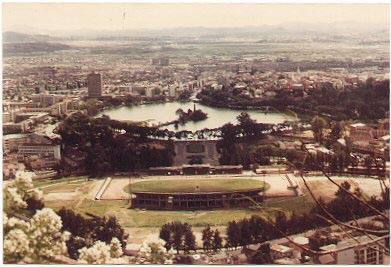
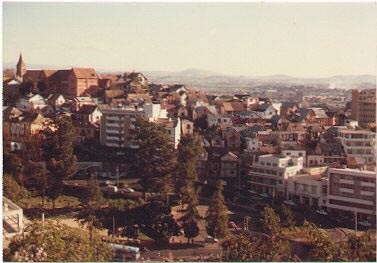
While Pat settled into his new office, I went about doing the toughest part of settling in a new country--setting up house. We had found a lovely older lady to take care of Bryan and the household chores, her name was Dorothee. In addition to Malagasy, which is the local language whose origins were Malayo-Indonesian, she also spoke excellent French. We were fortunate that Dorothee also spoke English. Her features were that curious mix of Asian and African that are typical to the people of Madagascar. Over 65% of the people are descended from emigrants from Indonesia and Malaysia. The remainder of the population are African and Arabian. Dorothee would forever remain in our memory with fondness.
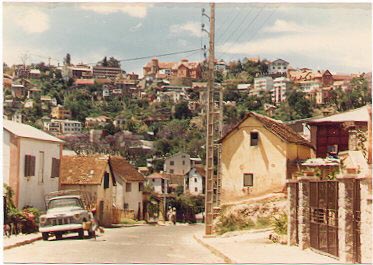
It was during this time that I discovered the Zuma, which is the central market of Tana. I love markets and explore every nook and cranny whenever possible, and the Zuma was trully exceptional. If you stood at one of the higher streets overlooking the market, you’ll see hundreds of huge white umbrellas, under which vendors sold their wares. The flower section is aburst with color and fragrance. At another part of the market is the handicrafts, and here you can find leather ware, woodcarvings, straw hats like the local people wear, even semi-precious stones, all strewn on mats on the ground. The rest of the marketplace has the wet and dry sections. Two of my favorite souvenirs of Tana are a painting of a tall house with a blooming jacaranda tree beside it, and a batik of the umbrellas of the Zuma with flowers and vendors under them.
I also learned slowly where to shop for whatever I needed. Yes, I even found out where to get ketchup (it wasn’t widely used) and absorbent toilet rolls as the locally available ones were slick and crisp as a sheet of onion skin typing paper. We had turkey for Thanksgiving and Christmas. I am sure there are a lot more things available to the shopper now than fourteen years ago. We always had the freshest fruits and vegetables, in fact, we grew strawberries in our backyard.
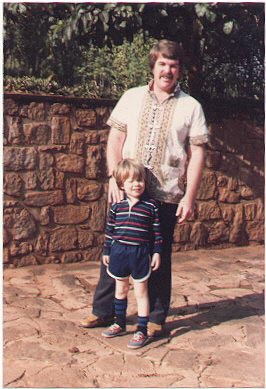
We found a house to rent in the outskirts of town, it had a huge yard and every seed I brought over from the states and planted grew and matured into perfection. I planted dill and celery, they were all big, fat, and juicy. I even planted a night-blooming jasmine and forgot about it until one night I was out in our backyard and saw huge white saucer-like blooms on a vine. They smelled heavenly. The climate was perfect for plants. Madagascar is known for the rarest flora and fauna. It is home to the unusual Lemur, a primitive family of primate.
We enrolled Bryan in the American School, I found a part-time job, made friends and we lived happily for the rest of our stay in Antananarivo. We went on holidays to Kenya, Mauritius, and the U.S., and also to a beach resort in Nosy Be, in the northwest of Madagascar. We all learned a little French.
As for the crime we had heard about when we first got there, well, there were robberies and pickpockets, but then that is just expected in any other city I would think. Madagascar has problems, but when you are there they seem to recede to the back of your mind, instead, you look around you and just take in the visual feast laid out around you and feel good.
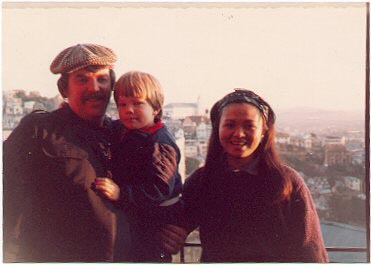
When we were leaving Madagascar for good, being driven to the airport for the last time, I knew that I may never see that verdant land again and I felt sad.This time the tears were because we were leaving that beautiful land. We were on our way to a new assignment in Ethiopia, but then, that is another story.
